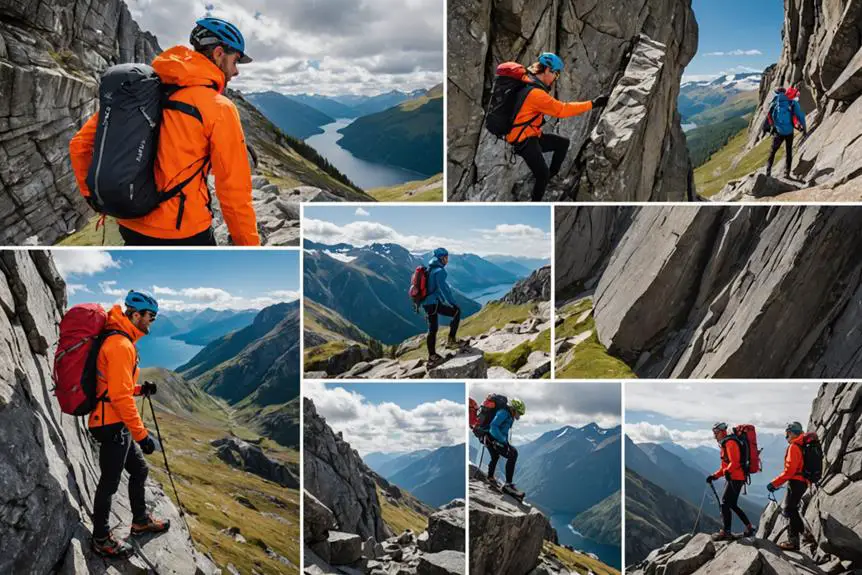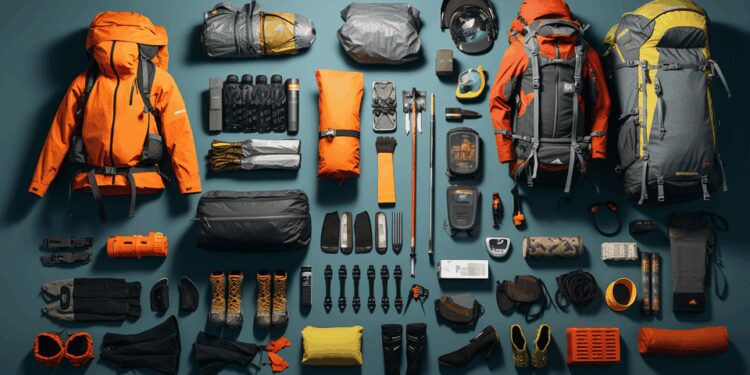In the world of adventure and exploration, innovation is more than just a buzzword it’s a necessity. Whether you’re trekking through alpine terrain, backpacking across remote trails, or surviving adverse environments, the gear you carry can mean the difference between a memorable journey and a perilous ordeal. In recent years, outdoor gear innovation has surged, driven by advancements in materials science, digital connectivity, environmental concerns, and user-centered design.
This article explores the major breakthroughs in outdoor gear, spanning across smart textiles, lightweight materials, connected devices, integrated safety tools, and sustainable manufacturing. We’ll discuss how these advancements enhance performance, reduce footprints, and redefine what modern adventurers can expect from their equipment.
1. Lightweightevolution: Materials Redefining Portability
One of the greatest challenges faced by outdoor enthusiasts is weight. The lighter the gear, the more efficient and enjoyable the experience. Here’s how material innovation is transforming that equation:
A. Ultralight Fabrics
-
Dyneema® composites: Offering incredible strength at a fraction of the weight of traditional textiles.
-
Ultralight ripstop nylon: Now as light as 10–20 g/m² without sacrificing tear resistance.
-
Nano-weaves: Engineered at microscopic levels to deliver windproof and waterproof performance in incredibly thin layers.
B. Composite Tents and Shelters
-
Carbon-fiber poles replace aluminum to reduce weight by 30–50% without compromising durability.
-
3D-printed structural hubs offer precise tolerances and cut out excess material, enabling stronger joints in frame and pole systems.
-
White-out shelters use translucent composite fabrics for thermal insulation while allowing ambient light inside.
C. Footwear Reinvented
-
Pebax® midsoles provide high energy return, great cushioning, and temperature resilience.
-
Vibram Litebase™ outsoles trim outsole thickness 30–40% while maintaining performance.
-
3D-knitted uppers conform to the foot for tailored fit and lighter construction without seams.
2. Smart Textile Revolution: From Reactive to Interactive

Sustainability and functionality converge in modern fabrics:
A. Phase Change Materials
-
Embedded in base layers and gloves to regulate body temperature by absorbing or releasing heat at specific thresholds.
B. Conductive Threads & E-Textiles
-
Allow built-in sensors or heating wires in jackets and gloves without bulky battery packs.
C. Self-Cleaning & Odor‑Resistant Coatings
-
Silver ion and graphene treatments prevent bacterial growth, extending wear cycles and reducing laundry needs.
D. UV‑Responsive Fabrics
-
Color and pattern shift with UV exposure, offering adaptive camouflage or visual indicators in high-sun environments.
3. Connected Gear: IoT in the Wilderness
The “Internet of Outdoor Things” is arming adventurers with tools never before possible:
A. GPS & Emergency Connectivity
-
Satellite communicators like Garmin inReach and Zoleo offer global SOS messaging and two-way text without cell service.
-
Smart compasses with load-bearing sensors alert rescuers in case of avalanche burial by triangulating signals.
B. Smart Backpacks
-
Packs with weight-distribution sensors and posture monitors alert you to adjust load or rest before fatigue sets in.
-
Solar-integrated harness panels can trickle-charge devices all day.
C. Wearables & Health Monitoring
-
Rugged fitness trackers now measure hydration levels, altitude acclimatization, and core temperature, sending triggers to rest or hydrate.
-
Smart socks with pressure-mapping sensors can predict hot spots before blisters form.
D. Environment Sensors
-
Pocket-sized devices monitor air quality, UV radiation, altitude, infrasound, and provide real-time safety insights for hikers and climbers.
4. Safety Innovation: Preparing for the Unexpected
A safer outdoor experience comes from smarter gear:
A. Avalanche & Storm Readiness
-
Avalanche airbags with lighter compressed gas systems and integrated smart triggers are now under 2 kg.
-
Weather-predictive fabrics embedded with optical fibers change color before storms.
B. Multi-Functional Emergency Tools
-
Blades with integrated flint rods, seatbelt cutters, signal mirrors, and glow-in-the-dark grips streamline your kit.
-
Inflatable exits integrated into packs or jackets for rapid use in flooding.
C. Portable Water & Energy Systems
-
Atmospheric water generators extract moisture from the air, even in deserts.
-
Fuel cells provide clean energy for charging devices using biofuel or butane.
5. Sustainability & Environmental Impact
Modern gear innovation isn’t just about performance it’s about protection:
A. Circular Design
A growing number of brands apply Cradle to Cradle frameworks, designing garments for repair, repurposing, and eventual recycling.
B. Bio-Based Materials
-
Boots using algae foam midsoles and pine based adhesives.
-
Wetsuits made from natural rubber instead of petroleum derived neoprene.
C. Reducing Single Use Plastics
-
Packaging-free boot fits and gear accessories reduce waste.
-
Refillable lube kits and sprayless waterproofing treatments minimize aerosol and plastic usage.
6. Integration & Modularity: Gear That Works as One
More products offer adaptability and multi functionality:
A. Modular Tents
-
Add-ons for screen rooms, mud skirts, or insulating liners let you adapt to seasonal needs.
B. Backpack Systems
-
Removable hydration packs, electronics pouches, and shelters reduce pack weight when not needed.
C. Interoperable Digital Systems
-
Apps sync between headlamps, stoves, weather stations, and backpacks to create cohesive, smart expedition setups.
7. The Future Outlook: Where Gear is Heading

The pace of innovation promises even more advanced tomorrow:
A. AI Fit & Configuration
-
Brands will use your 3D foot and body scans via apps to generate custom-fit shoes, backpacks, and clothing.
B. Augmented Reality Trail Support
-
Smart glasses powered with hiking maps, alerts, trail markers, and survival coaching.
C. Adaptive Materials
-
Textiles that self-repair rips via microencapsulated resin when a tear occurs.
D. Zero‑Carbon Manufacturing
-
Distributed micro factories powered by renewables near trailheads, reducing shipping carbon.
The realm of outdoor gear is no longer limited to rugged fabrics and metal frames. It is evolving into an ecosystem of smart, sustainable, lightweight, and interconnected tools. This new wave of adventure ready technology ensures safer, lighter, and more eco-conscious exploration. Whether you’re a weekend hiker or a seasoned mountaineer, staying informed about gear innovation is essential not just for performance, but for the planet and the future of adventure.
As manufacturers continue to push boundaries and explore unknown frontiers in material science, digital integration, and environmental stewardship, the modern explorer’s toolkit is set to become more resilient, responsive, and revolutionary than ever. The future of outdoor adventure is here and it’s smarter, lighter, and greener.












